How to Change Porsche Brake Fluid Like a Pro (Even If You're Not)
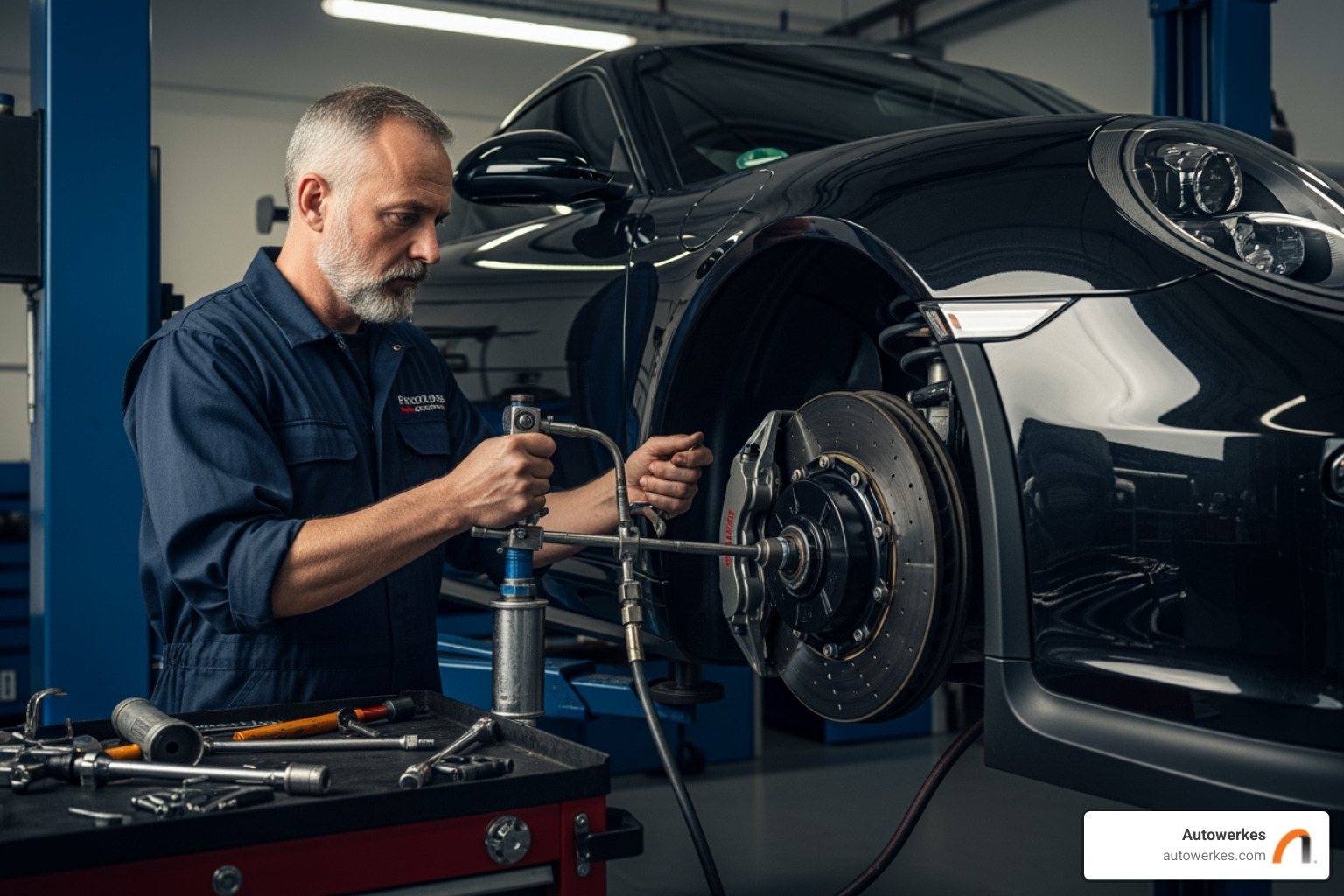
The Unsung Hero of Your Porsche's Stopping Power
A Porsche brake fluid change is one of the most critical yet overlooked maintenance tasks for your vehicle's safety and performance. This hydraulic fluid transfers the force from your brake pedal to the calipers, making it literally what stands between you and disaster when you need to stop.
Here's what you need to know about Porsche brake fluid changes:
- When: Every 2 years or 20,000 miles, whichever comes first
- Why: Brake fluid absorbs moisture, reducing its boiling point and causing brake fade
- Cost: DIY costs around $15-50 in materials; professional service varies by location
- Time: 1-2 hours for experienced DIYers
- Tools needed: Power bleeder, jack stands, wrenches, DOT 4 brake fluid
Your Porsche's braking system operates under extreme conditions. Unlike your Honda or Toyota, high-performance vehicles like Porsches generate significantly more heat during braking. This heat, combined with brake fluid's natural tendency to absorb moisture from the air, creates a perfect storm for brake failure.
The research shows that brake fluid is hygroscopic - it literally pulls water from the atmosphere. Over time, this moisture contamination reduces the fluid's boiling point from over 400°F to as low as 284°F. When your brakes get hot enough to boil this contaminated fluid, you get vapor bubbles in your brake lines. These bubbles compress under pressure, giving you that terrifying "spongy" pedal feel just when you need maximum stopping power.
Even worse, the moisture causes internal corrosion in your expensive ABS and stability control systems. One forum user shared how their friend's brakes failed on a track day after an incomplete fluid change - a reminder that this isn't just about maintenance, it's about safety.
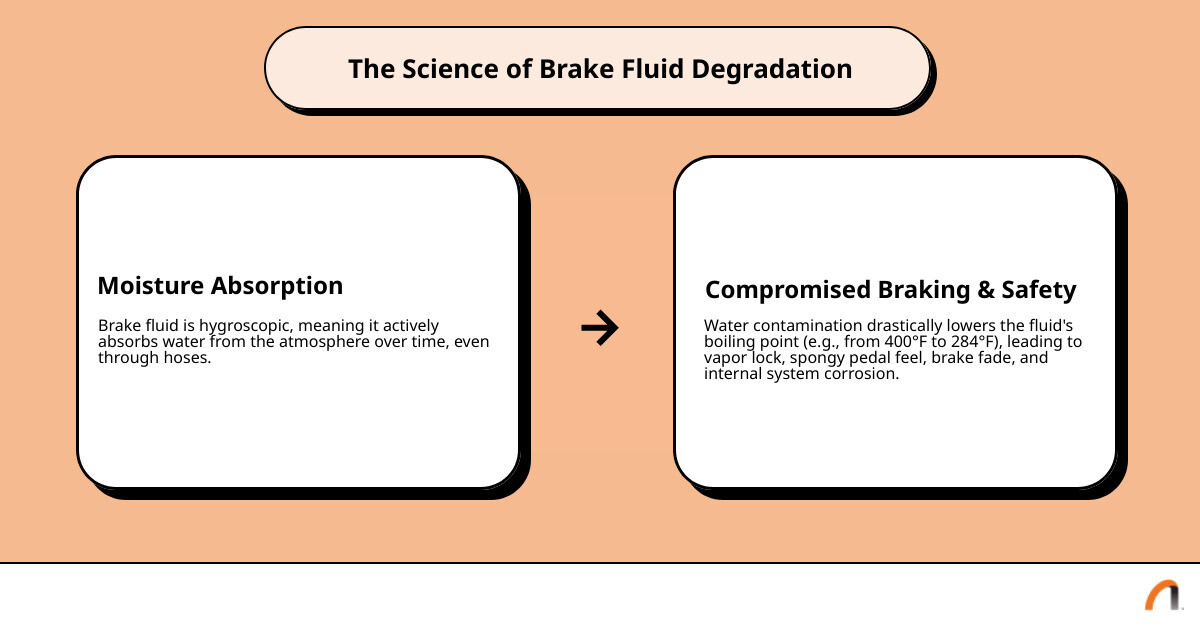
Similar topics to Porsche brake fluid change:
When and Why a Porsche Brake Fluid Change is Non-Negotiable
Your Porsche’s brake fluid works harder than almost any other fluid in the car. Because it transfers hydraulic pressure, even a small drop in performance can mean a big drop in stopping power. Regular changes aren’t a luxury—they’re a must for safety, performance and component longevity.
The Science in 3 Quick Points
Brake fluid is hygroscopic (it absorbs water). As that moisture content rises, three things happen:
- Boiling-point plunge – Water boils far sooner than brake fluid. Under spirited driving or even heavy city traffic, heat can create vapor bubbles, giving you that dreaded spongy pedal and potential brake fade.
- Corrosion creep – Water encourages rust inside the master cylinder, calipers and, worst of all, the intricate valves of your ABS/PSM units. Repairs here are never cheap.
- Overall dullness – Old, moisture-laden fluid simply can’t deliver the crisp, immediate response you expect from a Porsche.
Want to geek out further? Check out this helpful guide on brake fluid testing.
Porsche’s Official Change Interval
Porsche specifies a brake-fluid replacement every 2 years or 20,000 miles (30,000 km)—whichever comes first. Even garage queens collect moisture through hoses, seals and the reservoir cap, so time alone is enough reason to change the fluid. Track your Porsche? Cut that interval in half and flush before any major event.
Common Warning Signs
Still tempted to delay? Your car will usually warn you first:
- Spongy or mushy pedal travel
- Longer stopping distances or inconsistent braking feel
- Vibration under braking (sometimes fluid-related, not just warped rotors)
- ABS light illuminated
- Fluid in the reservoir looks dark or murky
If you notice any of these, schedule service immediately or see our page on Porsche Brake Repair.
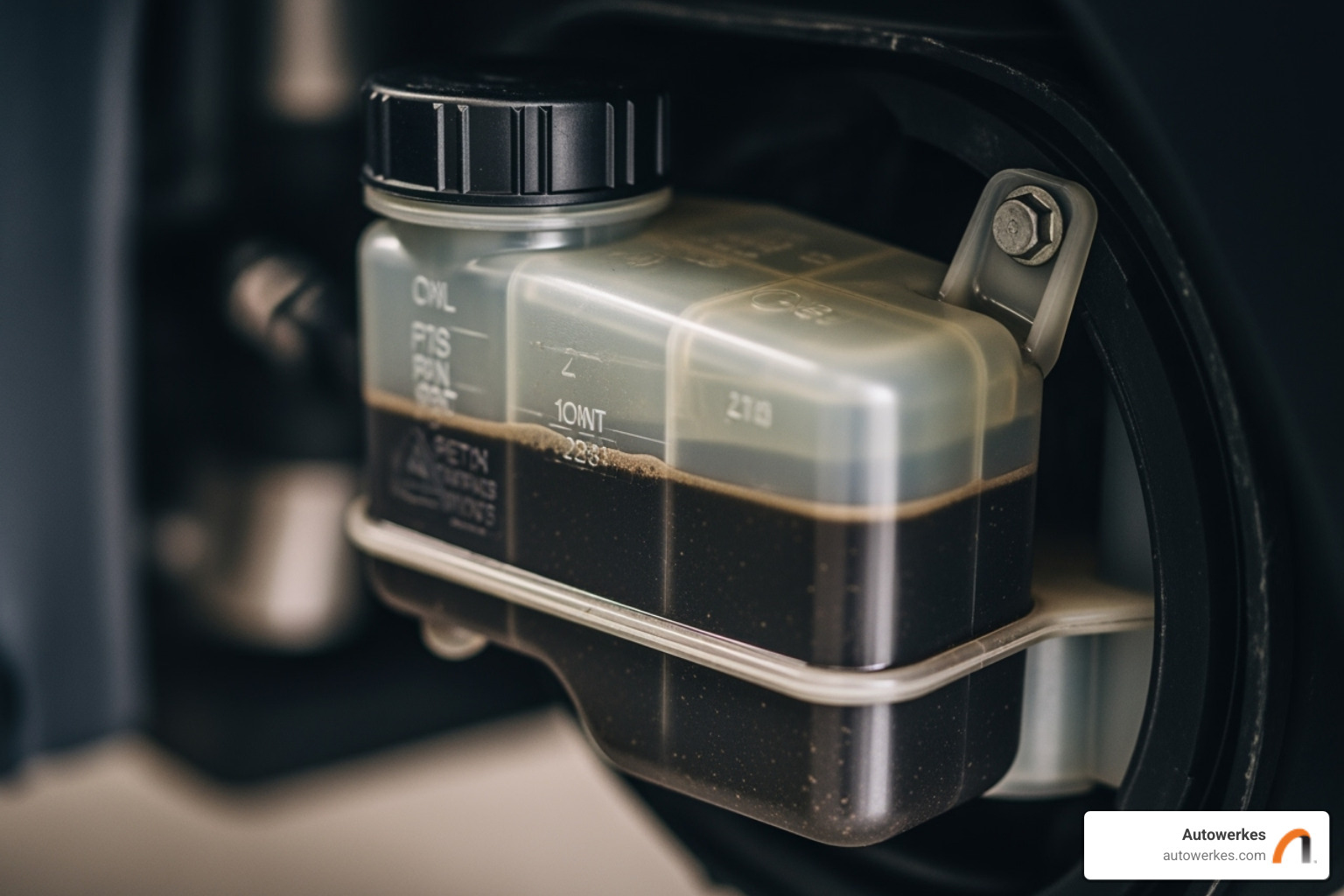
The Ultimate DIY Guide: Performing Your Own Porsche Brake Fluid Change
Ready to roll up your sleeves? A DIY flush saves labor costs and deepens your knowledge of the car you love. Just remember: precision and cleanliness matter more than speed.
Gearing Up: Tools & Materials Checklist
- 2 L of fresh DOT 4 fluid (ATE TYP 200, Motul RBF 600/660, or similar)
- Power bleeder (Motive or equivalent) and clear catch bottle
- 11 mm flare wrench for bleeder screws
- Floor jack, jack stands, wheel chocks
- Torque wrench for lug nuts
- Gloves, safety glasses, towels/rags (brake fluid ruins paint)
- Optional: turkey baster for quick reservoir clean-out
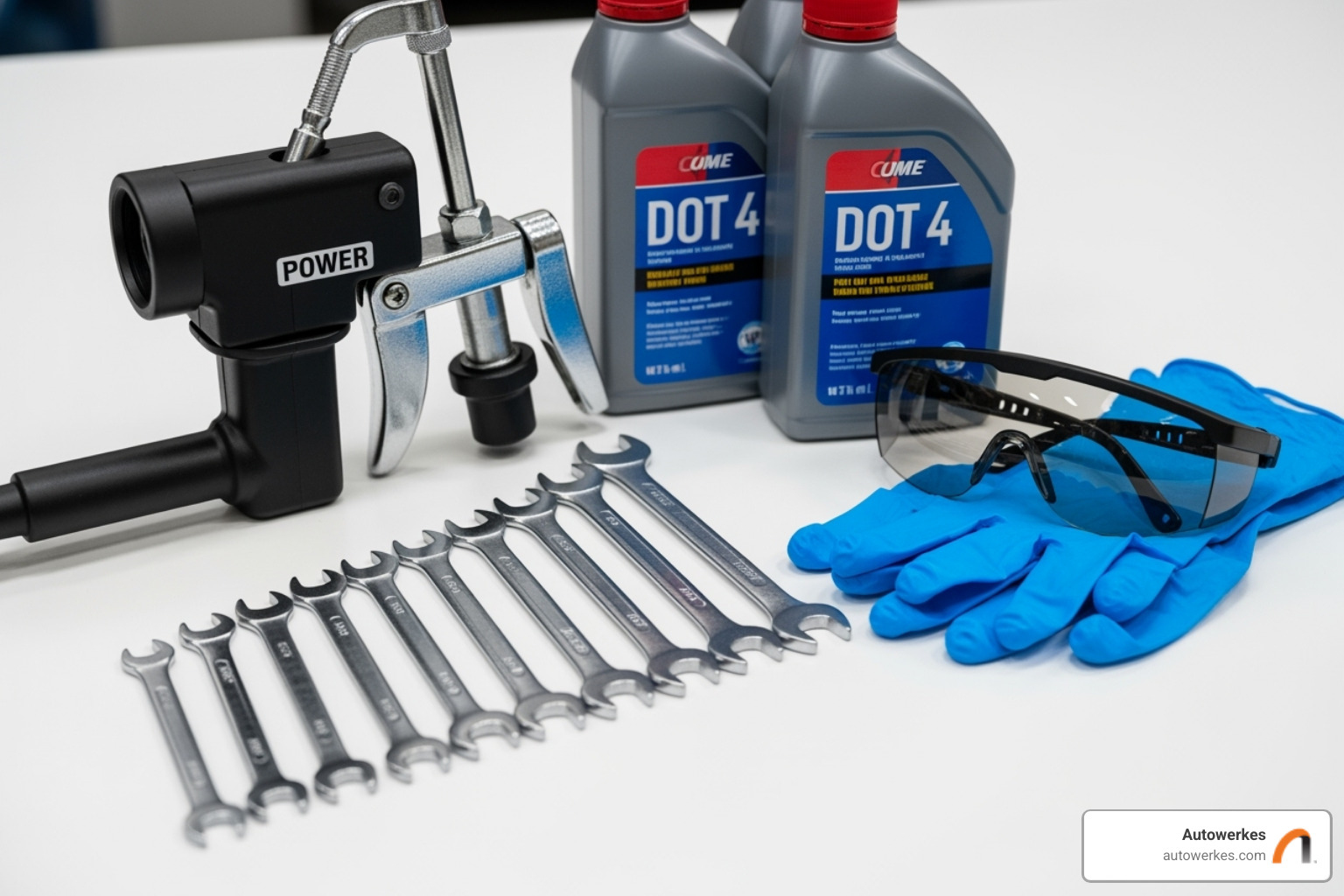
Step-by-Step (Pressure-Bleeder Method)
- Prep the car – Park on level ground in a safe area around Huntington Beach (or your driveway). Set the parking brake, chock opposite wheels, don gloves and eye protection, and drape towels around painted surfaces near the reservoir.
- Open the reservoir – Remove cap and mesh filter. (Optionally) extract old fluid with a turkey baster, keeping the level above MIN.
- Pressurize – Fill the power bleeder (or leave it dry if you prefer to top up manually) and pressurize to about 15 psi / 1 bar.
- Lift & wheel removal – Loosen lug nuts slightly, lift with the jack, support on stands, then remove wheels.
- Bleed order – Work from the line furthest to closest to the master cylinder:
- Right Rear
- Left Rear
- Right Front
- Left Front
- Bleed each caliper – Attach catch bottle hose, crack bleeder ¼-½ turn, and let fluid flow until it runs clear and bubble-free (inner bleeder first if your caliper has two). Tighten gently (about 6–8 ft-lb), cap the nipple and move on.
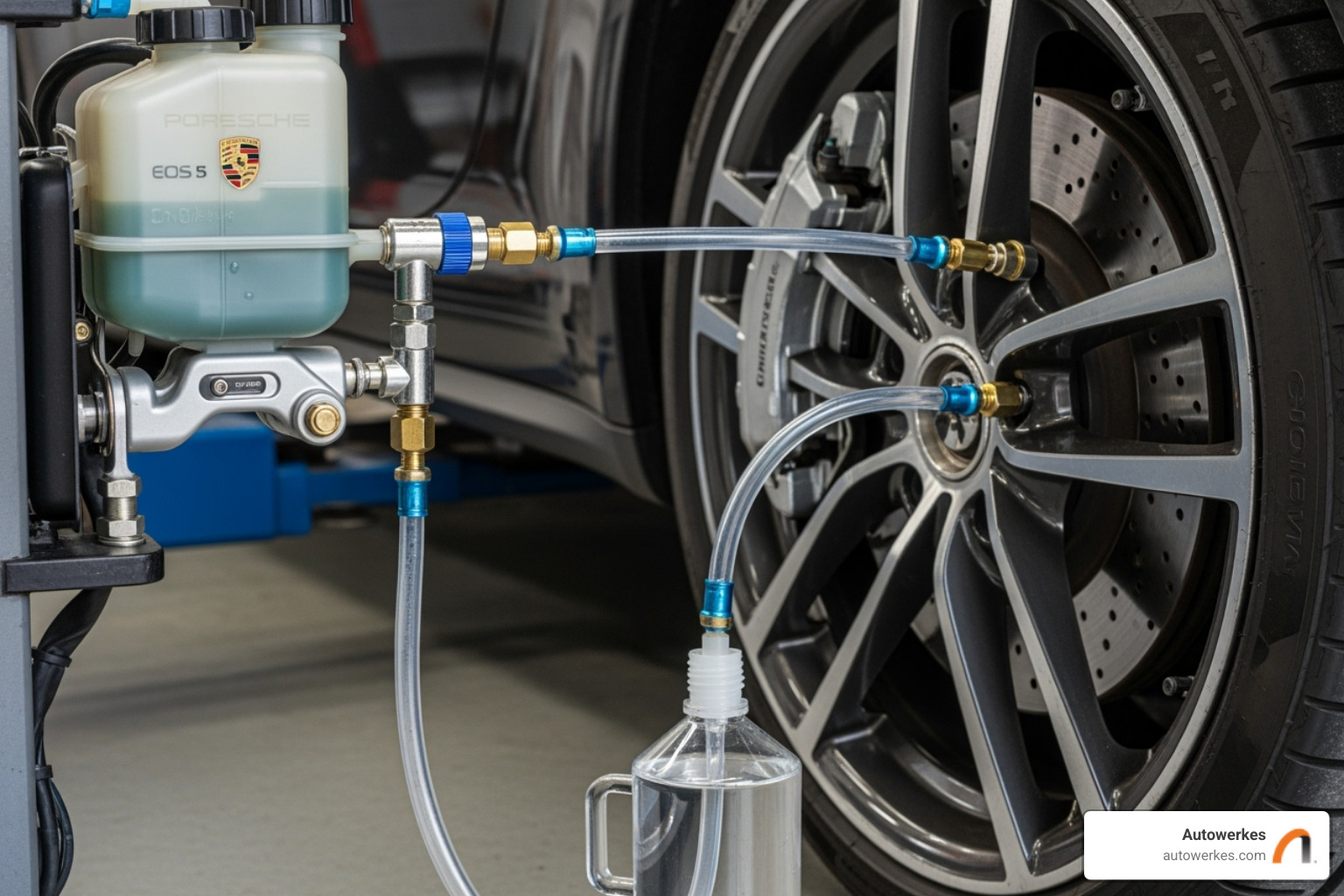
- Wrap-up – Release bleeder pressure, top the reservoir to MAX, reinstall filter and cap. Re-fit wheels and torque lug nuts (usually 96 ft-lb; center-locks are radically higher—check your manual). Lower the car, pump the pedal to verify a firm feel, then check for leaks.
- Test & dispose – Drive slowly at first, confirming consistent pedal response. Collect used fluid in a sealed container and drop it at your local parts store or recycling center.
Prefer a Pro? We’ve Got You Covered
DIY not your thing—or you want the added assurance of an ABS scan with Porsche PIWIS? Autowerkes’ certified technicians in Huntington Beach use factory-level tools to purge every last air bubble, inspect the entire brake system and get you back on the road fast. Save time, protect your paint, and enjoy true peace of mind.
Ready to give your Porsche the expert touch? Schedule your expert Porsche Auto Repair today!
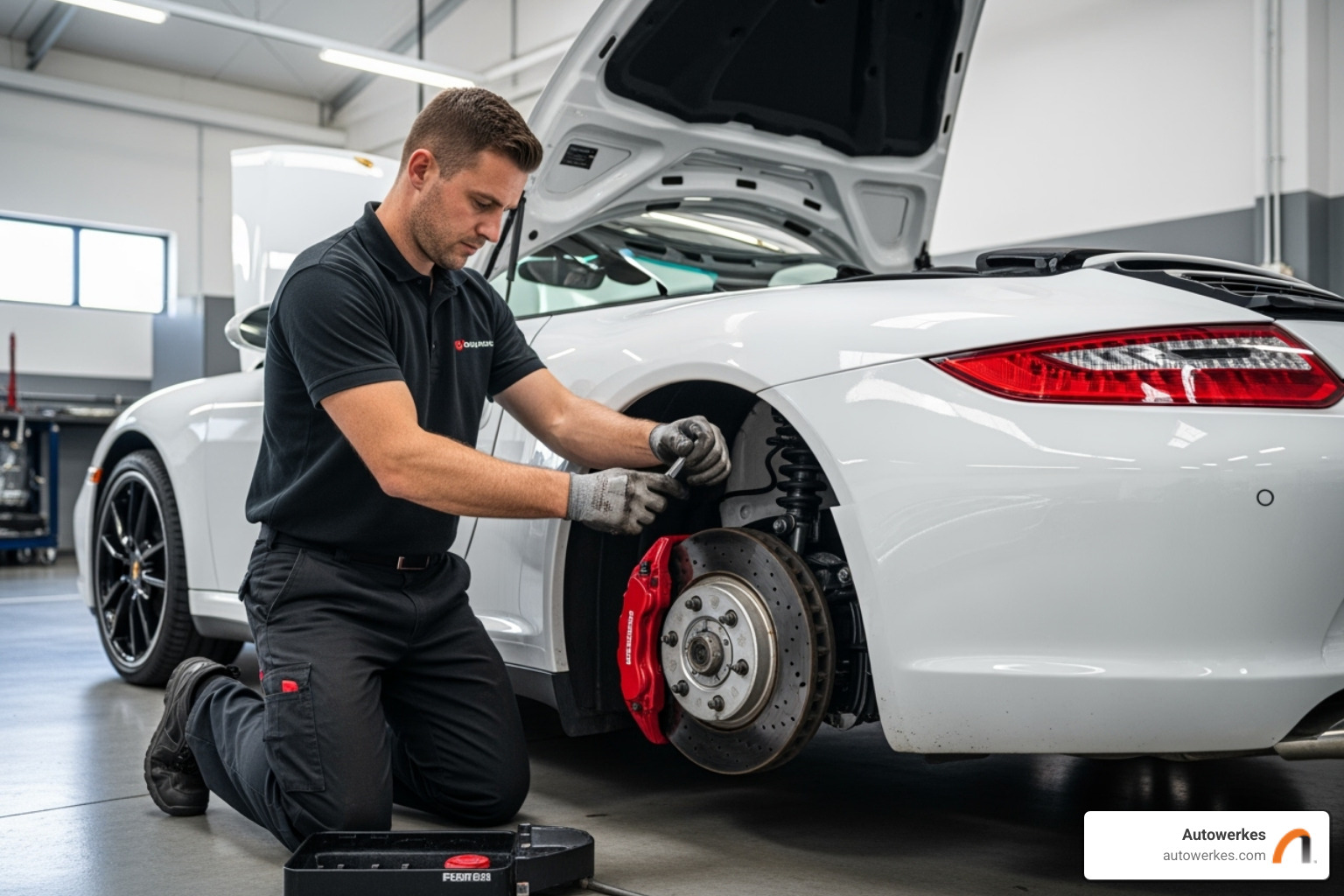

.svg)




